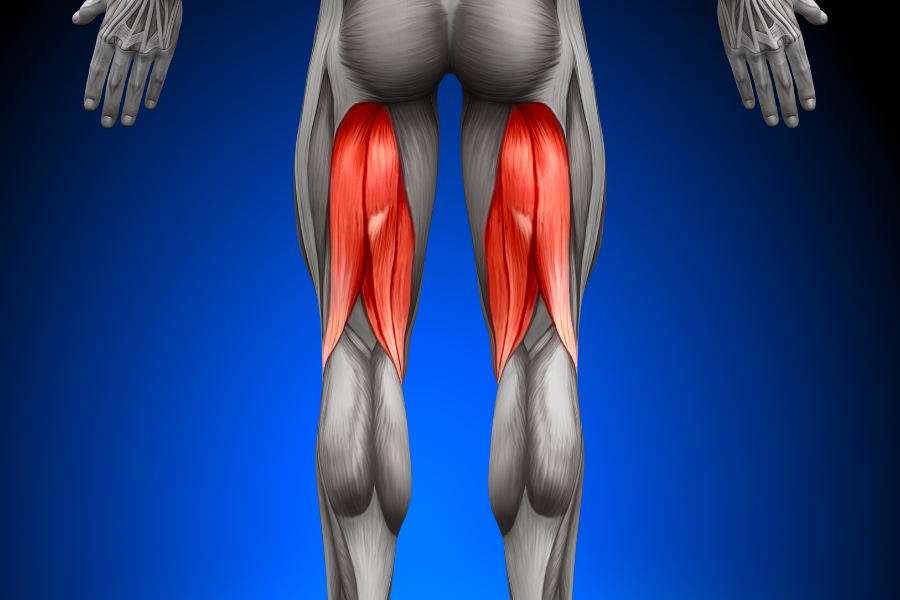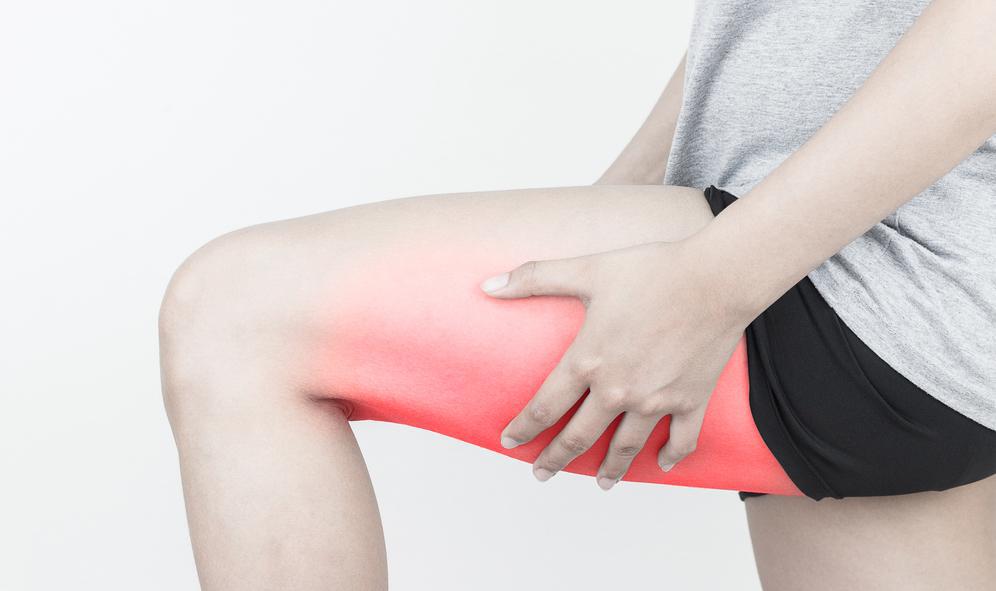
A hamstring injury can be frustrating, especially if you’re an active individual or an athlete who thrives on movement. The pain, stiffness, and limited mobility can keep you away from your sport, daily activities, and even simple movements like walking or bending. At PhysioRelieve, we specialize in hamstring injury physiotherapy in Ghatkopar, Mumbai, offering proven treatments to speed up recovery and restore your performance safely.
Whether it’s a hamstring strain, a pulled hamstring, or a muscle tear, our expert physiotherapists use evidence-based rehabilitation techniques to help you heal faster and prevent re-injury. In this guide, we’ll explain how physiotherapy accelerates hamstring recovery and why it’s the most effective choice for long-term healing.
Understanding Hamstring Injuries
The hamstring is a group of three muscles located at the back of your thigh. These muscles help you bend your knee and extend your hip — essential for walking, running, and jumping.
Hamstring injuries occur when one or more of these muscles are overstretched or torn. This often happens during sports like football, sprinting, or tennis, but it can also occur during everyday activities if the muscles are tight or weak.
Common types of hamstring injuries:
-
Grade 1: Mild strain with minor pain and tightness
-
Grade 2: Partial tear with swelling and difficulty walking
-
Grade 3: Complete tear with severe pain and loss of mobility
Common symptoms include:
-
Sudden sharp pain in the back of the thigh
-
Swelling and bruising
-
Difficulty walking or running
-
Muscle weakness
Causes of Hamstring Injuries
Understanding the causes can help in preventing hamstring injuries and choosing the right recovery plan. Some common causes are:
-
Lack of proper warm-up before exercise
-
Weak or imbalanced thigh muscles
-
Overuse during sports or workouts
-
Sudden acceleration or deceleration movements
-
Poor flexibility and posture
How Physiotherapy Helps Hamstring Injury Recovery
Physiotherapy is one of the most effective ways to treat hamstring injuries because it focuses on reducing pain, restoring strength, and improving flexibility without invasive procedures. At PhysioRelieve, our approach to sports injury rehabilitation combines advanced therapies, personalized exercise plans, and preventive strategies.
Here’s how physiotherapy accelerates recovery:
1. Pain Relief and Swelling Reduction
We use cold therapy, ultrasound treatment, and manual therapy to minimize swelling and manage pain in the early stages.
2. Restoring Flexibility
Tight hamstrings can delay healing. Stretching techniques guided by a physiotherapist help restore normal muscle length and prevent scar tissue build-up.
3. Strengthening Muscles
Weak muscles are prone to re-injury. We design targeted hamstring strengthening exercises and core stability workouts to rebuild strength.
4. Improving Blood Flow
Deep tissue massage and soft tissue mobilization boost circulation, helping nutrients reach the injured muscle for faster repair.
5. Functional Training
We prepare you for a safe return to sports or work with sport-specific rehabilitation drills that mimic real-life movements.
Physiotherapy Treatments for Hamstring Injuries
At PhysioRelieve, we combine traditional techniques with modern technology to ensure the best outcomes. Our treatment options include:
-
Manual Therapy: Hands-on techniques to release muscle tension and improve mobility.
-
Electrotherapy: TENS and ultrasound to stimulate healing.
-
Dry Needling: Targets trigger points to relieve deep muscle tension.
-
Kinesio Taping: Provides support and reduces strain on the healing hamstring.
-
Progressive Exercise Programs: Safe, guided exercises to restore strength and flexibility.
Benefits of Physiotherapy for Hamstring Recovery
-
Faster Healing: Targeted treatment speeds up recovery time.
-
Prevents Re-Injury: Strengthening and balance training reduce future risks.
-
Non-Surgical Approach: Avoids invasive procedures and long downtime.
-
Personalized Plans: Every injury is unique — so is our rehab plan.
-
Pain-Free Movement: Restores confidence and mobility.
Home Care & Self-Management Tips
While physiotherapy is essential, your recovery also depends on what you do at home:
-
Apply ice packs for 15–20 minutes during the first 48 hours.
-
Perform light stretching only under professional guidance.
-
Avoid high-impact sports until your physiotherapist clears you.
-
Stay consistent with your prescribed exercises.
When to See a Physiotherapist
You should seek physiotherapy immediately if you experience:
-
Sudden sharp pain in the thigh during activity
-
Difficulty walking or bending the knee
-
Persistent swelling and bruising
-
Recurrent hamstring injuries despite rest
Why Choose PhysioRelieve for Hamstring Injury Physiotherapy in Mumbai?
At PhysioRelieve, we understand the frustration of being sidelined by a hamstring injury. Our team of experienced physiotherapists in Ghatkopar, Mumbai has helped countless athletes, fitness enthusiasts, and everyday individuals get back on their feet quickly and safely.
What sets us apart:
-
Personalized rehabilitation programs
-
Latest physiotherapy equipment
-
Sports injury specialists
-
Focus on long-term recovery and prevention
Conclusion
A hamstring injury doesn’t have to keep you away from your active lifestyle for long. With the right physiotherapy treatments, you can recover faster, regain strength, and return to your favorite activities with confidence.
If you’re struggling with hamstring pain, book an appointment with PhysioRelieve today. Let’s get you moving pain-free again!
Frequently Asked Questions About Hamstring Injury Physiotherapy
1. How long does it take to recover from a hamstring injury with physiotherapy?
Recovery time depends on the severity of the injury. Mild hamstring strains (Grade 1) can heal in 2–3 weeks with consistent physiotherapy, while severe tears (Grade 3) may take 8–12 weeks or more. Regular physiotherapy sessions can significantly speed up the healing process.
2. Can physiotherapy prevent future hamstring injuries?
Yes. Physiotherapy focuses on strengthening muscles, improving flexibility, and correcting imbalances, which reduces the risk of future hamstring strains. Our programs at PhysioRelieve also include injury prevention strategies for athletes and active individuals.
3. What physiotherapy treatments are used for hamstring injury recovery?
Common treatments include manual therapy, ultrasound therapy, dry needling, kinesio taping, stretching exercises, and progressive strengthening programs. These are customized based on the stage and severity of the injury.
4. Should I rest completely or start exercises after a hamstring injury?
In the first 48–72 hours, rest is crucial to allow healing and reduce swelling. After that, guided physiotherapy exercises help restore movement, flexibility, and strength. Avoid self-prescribed workouts without professional advice to prevent re-injury.
5. Is it safe to return to sports after hamstring injury physiotherapy?
Yes, once your physiotherapist confirms full strength, flexibility, and stability in your hamstring, you can return to sports. At PhysioRelieve, we conduct sport-specific rehabilitation drills to ensure a safe comeback.


